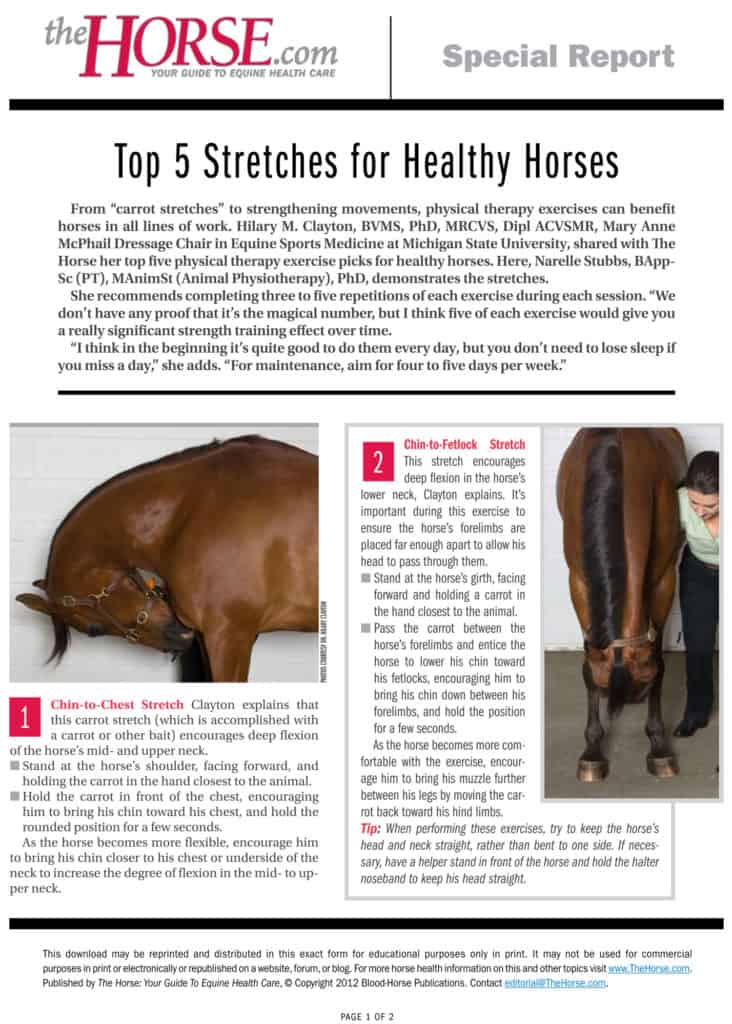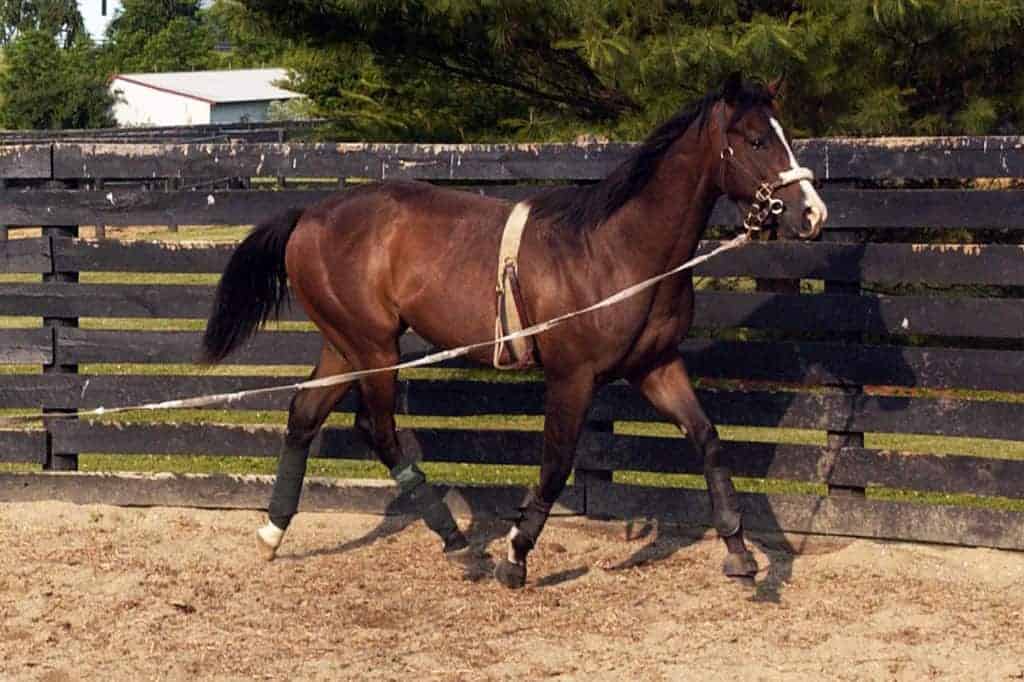
Top 5 Stretches for Healthy Horses
Learn the benefits of physical therapy stretches for your horse from veterinary experts and follow our step-by-step instructions to help make your horse more flexible and performance ready.

Learn the benefits of physical therapy stretches for your horse from veterinary experts and follow our step-by-step instructions to help make your horse more flexible and performance ready.

Veterinary professors in England develop “Anato-Rug” to help students study equine anatomy.
The colt was diagnosed with a peripheral nerve injury that caused atrophy in his left infraspinatus muscle.

Researchers tested electromyography for identifying equine muscle fatigue during exercise.

Exercising the multifidus muscles in addition to daily training could reduce equine back pain.
The first discussion, which will cover sacroiliac pain in horses, is scheduled for Aug. 6 at 6:30 p.m.

More research is needed to fully understand equine movement disorders such as shivers and stringhalt.

Understanding equine acute rhabdomyolysis can help ensure affected horses receive appropriate veterinary care.
One veterinarian shares his thoughts on the past, present, and future of stem cells in equine medicine.

Muscular causes of poor performance, such as tying up and back pain, are relatively common in equine athletes.

Researchers collected information about health problems experienced by young horses being prepped for sale.
Eighteen cases identified in France, four in Great Britain, and one in New Zealand.

Research indicates that most sound horses’ movements differ depending on direction of travel on a circle.
Researchers have discovered a mutation in the New Forest pony’s DNA that can cause this muscular disease.

Researchers and veterinarians are still working to better understand both the etiology and the disease itself.
The 2012 program kicks off on Feb. 23 with “Managing Angular Limb Deformities in the Young Horse.”
Stay on top of the most recent Horse Health news with
"*" indicates required fields